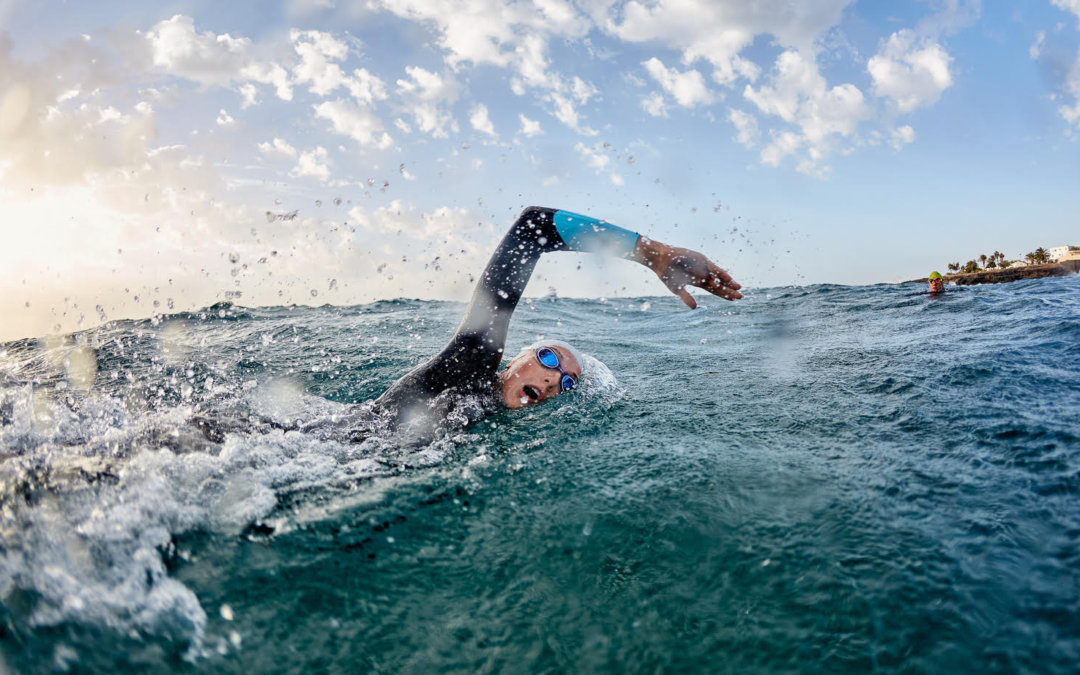The ocean is an amazing place to swim. Whether you’re a seasoned open water swimmer or someone who is brand new to the sport, swimming in the ocean can be a great way to enjoy the outdoors and build your fitness. Ocean swimming does have its own set of challenges and can be very different from swimming in the pool.
Take a look at these 5 important differences between ocean swimming and pool swimming:
1. The Ocean Water is Colder
Typically ocean water is colder than pool water. You can prepare for this by taking a cold shower beforehand, or even just jumping into an ice bath if you’re feeling brave (which will also help with sore muscles). If you start to feel cold during the swim, keep your body moving or invest in a good wetsuit to keep your body temperature up in colder water.
2. You Won’t Always Know How Deep the Water is
While the depth of your pool will be measured in meters, open water won’t come with a marked depth. In oceans, lakes, and rivers around the world, there are tides—which cycle between high and low points over a day or two—and storms that can cause waves to crash into shore. Local weather conditions also affect water levels: if it’s been raining heavily recently, you’ll want to check online before going into an unfamiliar body of water. Another important point in this is that you always want to check the weather before swimming outdoors, whether that be in a pool or open water, to make sure it’s safe to be in the water.
3. There are Currents and Undercurrents
Ocean currents and undercurrents are created by wind, tides, waves and the shape of the ocean floor. As a result, there are many different types of currents that you may encounter in your ocean swimming experience. Currents can be dangerous if you get trapped in one and have to swim against it for long distances without any rest breaks or breaks from exhaustion. Undercurrents are much harder to detect because they move slower than other kinds of current and they often flow along the bottom layer of an area known as a channel. Always be cautious and take currents into account when swimming in the open ocean.
4. Be prepared for What to do if You See Wildlife
Ocean swimming is an exciting experience, but it can also be dangerous. Wildlife can be curious about swimmers, so be aware of your surroundings when entering the water. If you see wildlife, don’t panic. Keep calm, get out of the water slowly. Always be aware of your surroundings when in open water and it doesn’t hurt to train with a buddy while in open water for an extra safety precaution.
5. It’s Harder to Swim Straight in the Ocean
The movement of the water is more complicated in the ocean, as compared to a swimming pool. The currents and undercurrents can be stronger and more unpredictable than you’re used to. In addition, there are wind and waves on top of this. The tides are another factor in the ocean that will affect your path straight ahead. Because of the movement of the water and differences in tides, it’s important to keep a good sight while swimming in open water. Unlike swimming in a pool, there is no visible bottom to follow to keep straight.
Swimming in the ocean is a very different experience from swimming in a pool. You’ll need to be more aware of your surroundings, and you won’t always know exactly what’s under the surface. There are also currents and tides that can pull you away from shore. The most important thing to remember when swimming in an ocean is to be prepared for a bit of a rougher swim and always be aware of your surroundings.
Looking for more ways to ensure you’re ready for race day? Contact me today to set up a free coaching consultation!
Train Right, Tri Right!
Coach MJ







